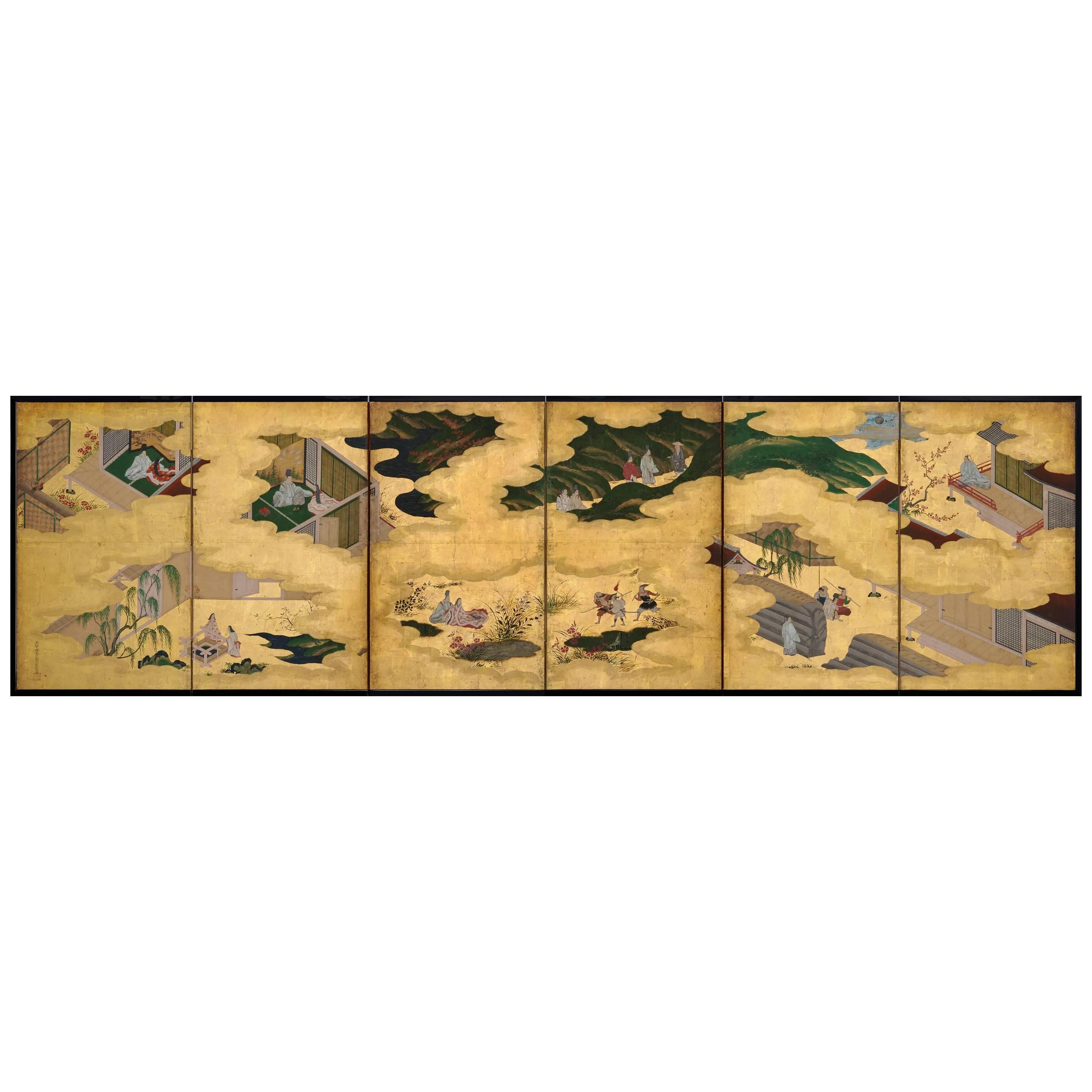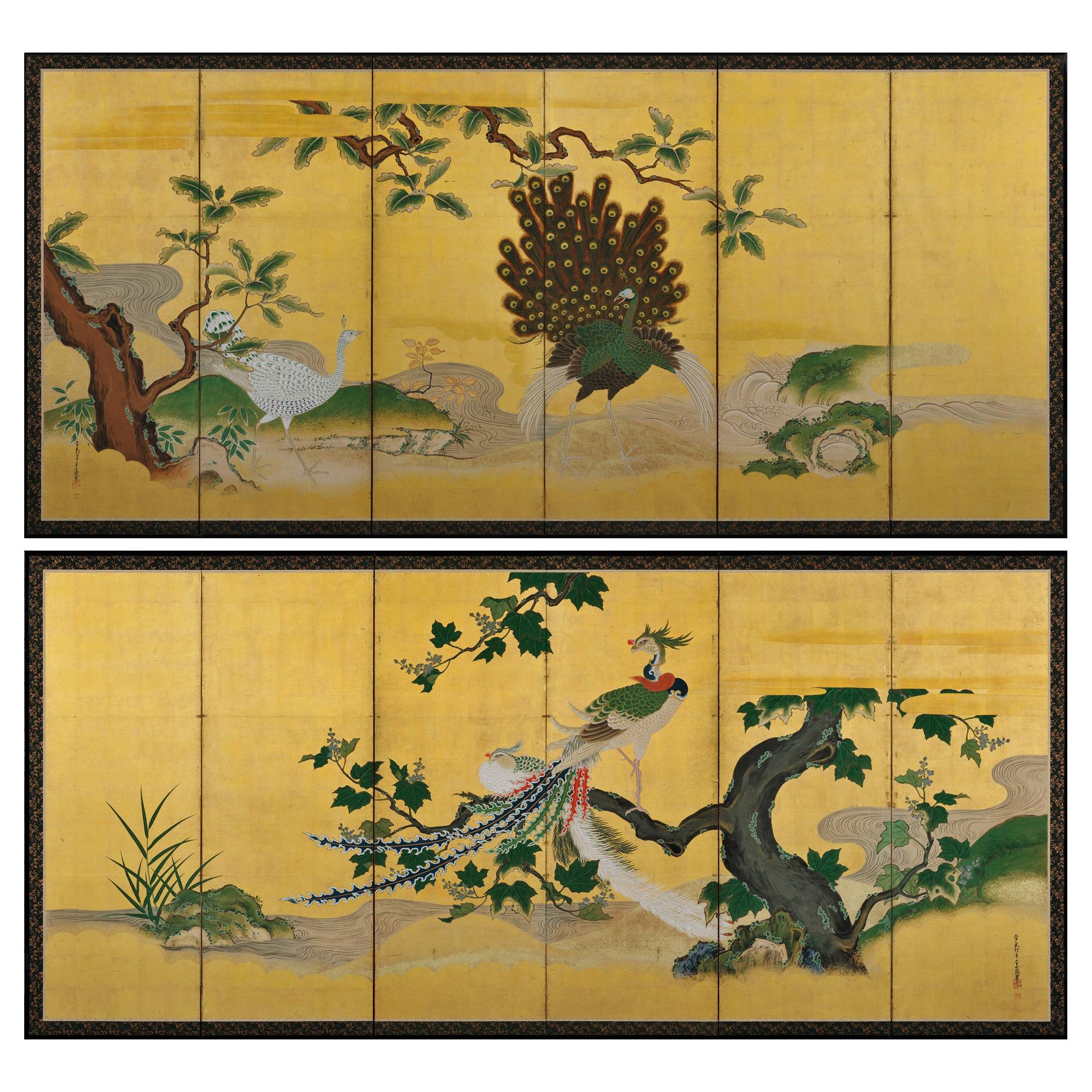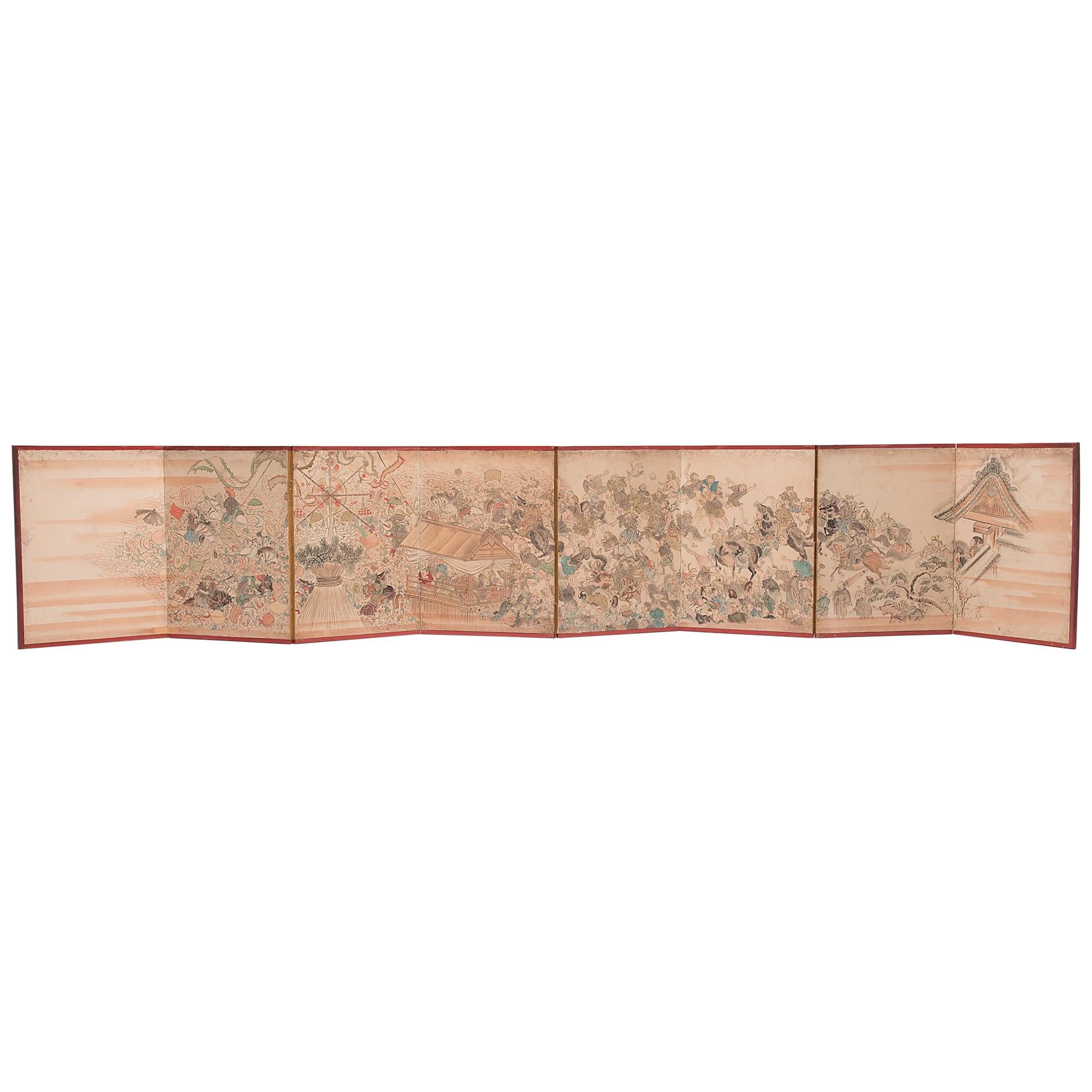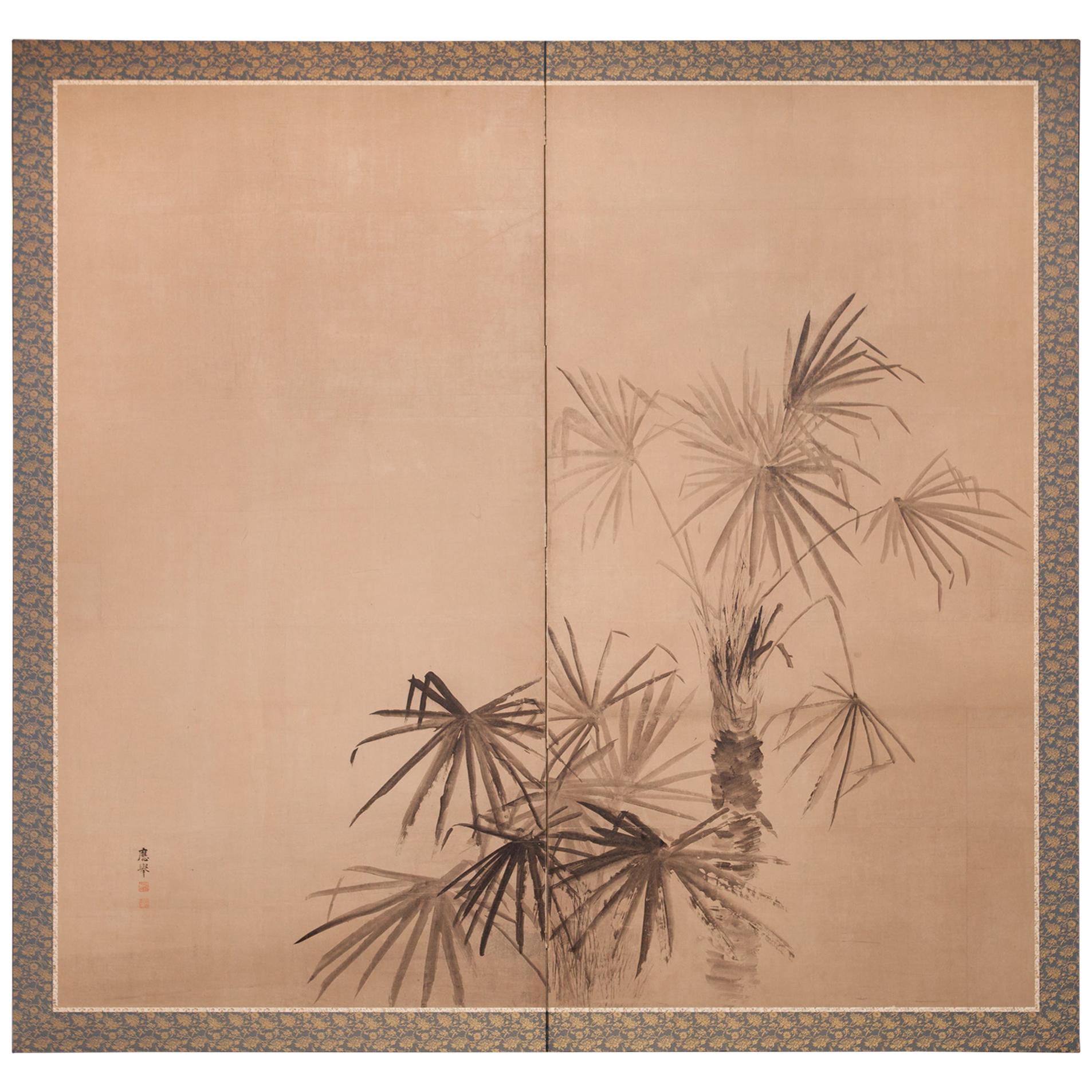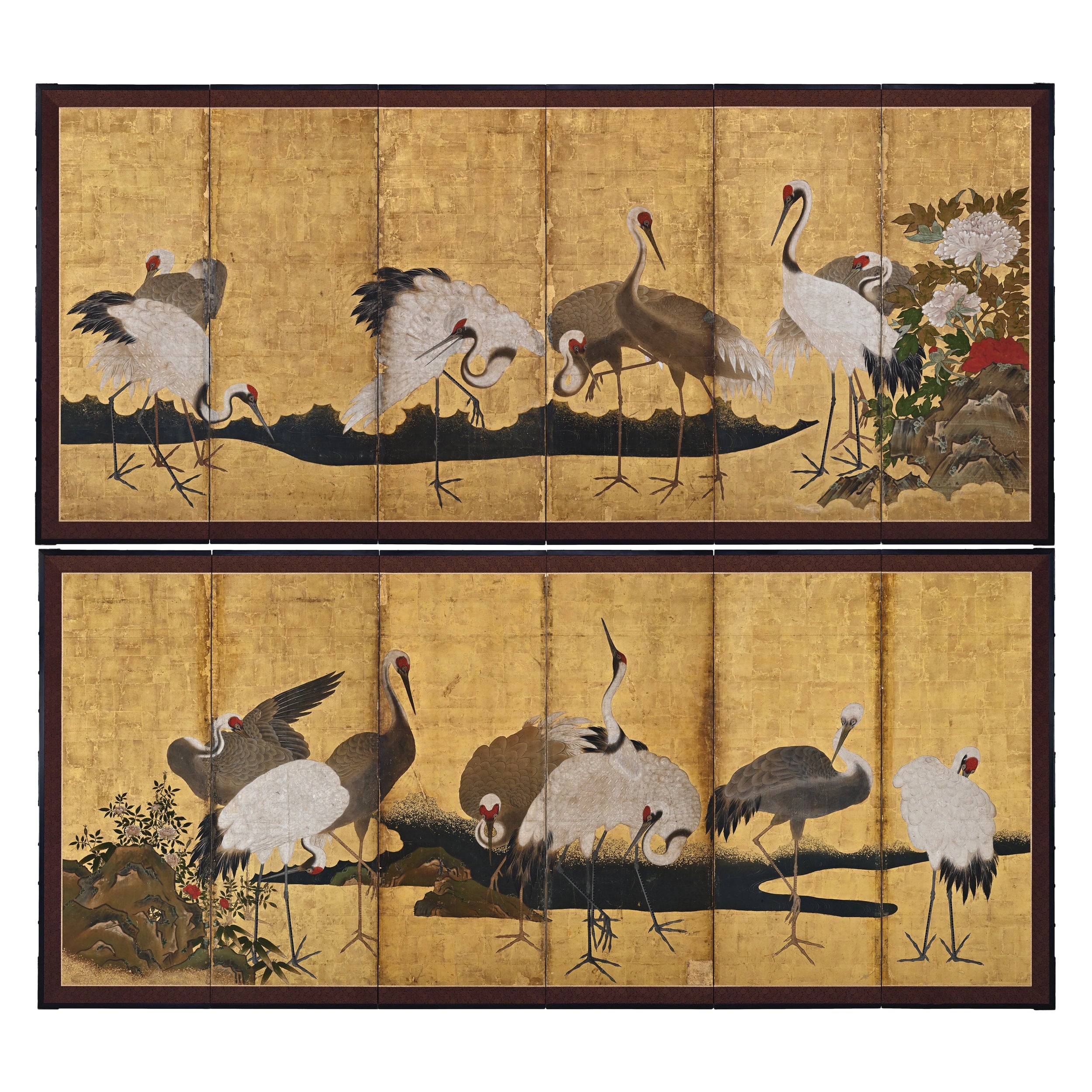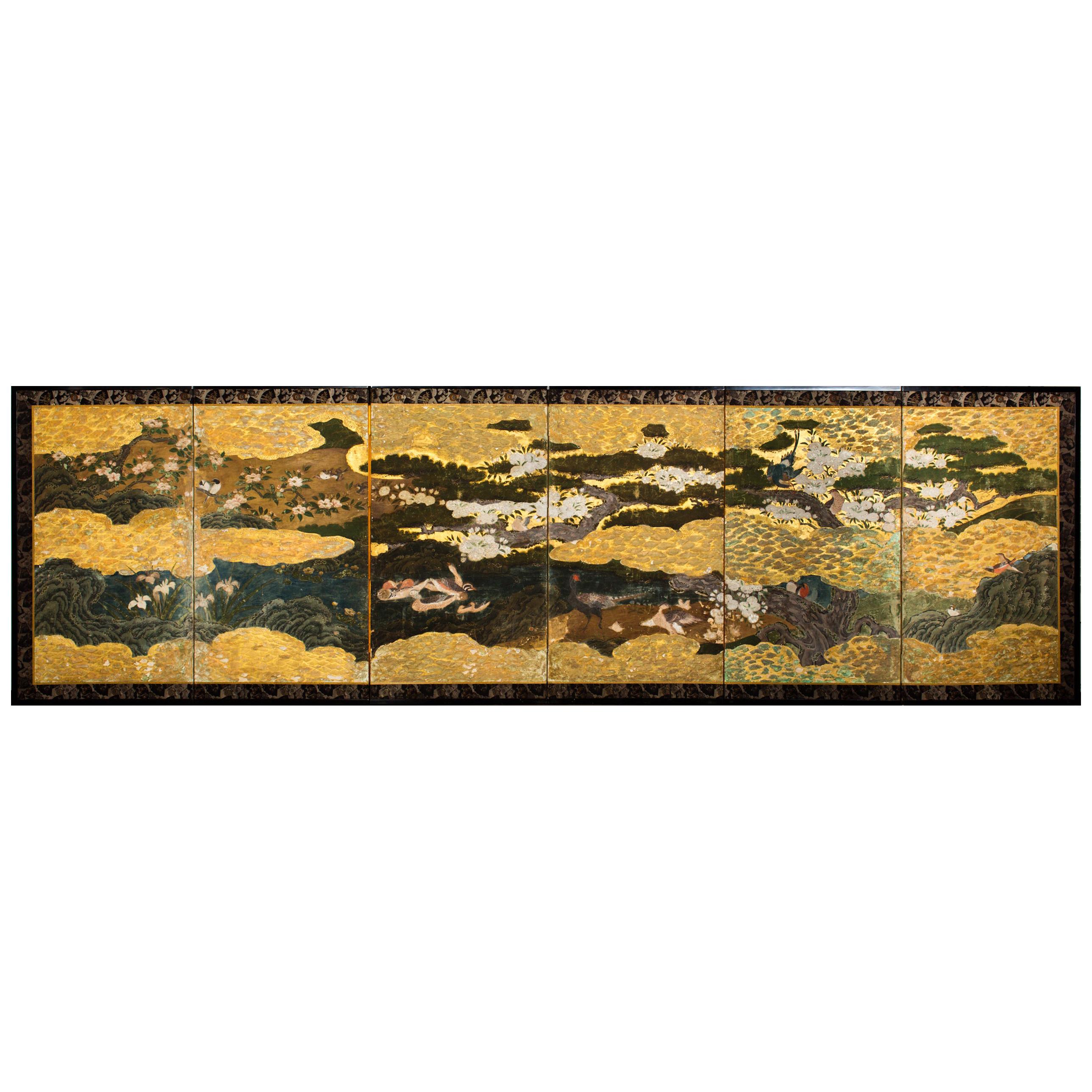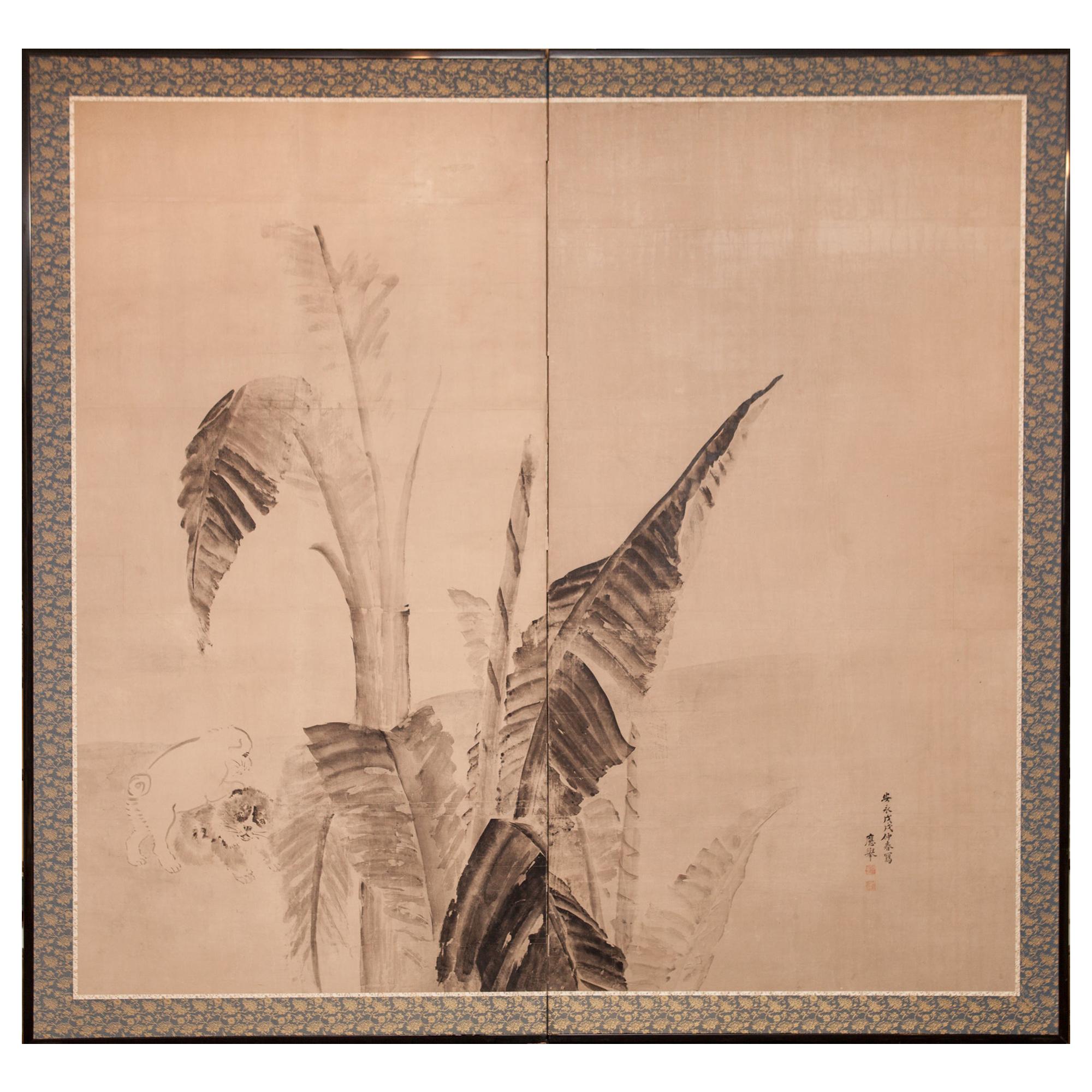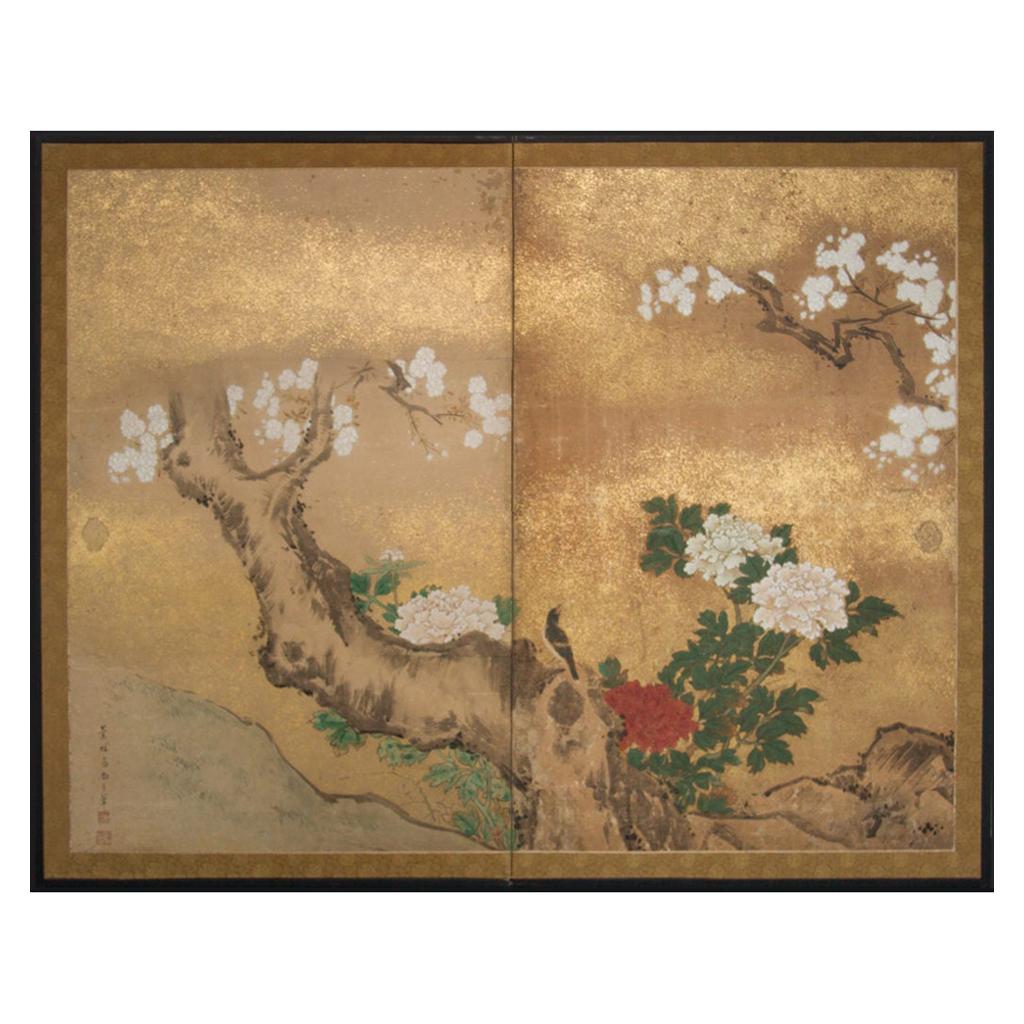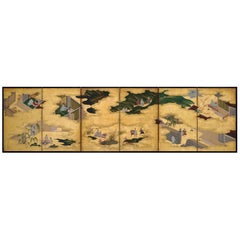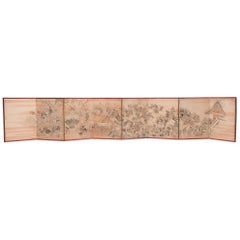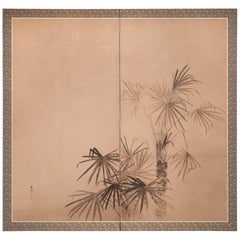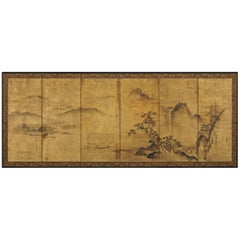
Kiyono Yozan, circa 1700 “Xiao & Xiang” Japanese Screen Painting
View Similar Items
Want more images or videos?
Request additional images or videos from the seller
1 of 7
Kiyono Yozan, circa 1700 “Xiao & Xiang” Japanese Screen Painting
About the Item
- Creator:Kiyono Yozan (Artist)
- Dimensions:Height: 41 in (104.14 cm)Width: 101.5 in (257.81 cm)Depth: 0.75 in (1.91 cm)
- Style:Edo (Of the Period)
- Materials and Techniques:
- Place of Origin:
- Period:1700-1709
- Date of Manufacture:circa 1700
- Condition:Wear consistent with age and use.
- Seller Location:Kyoto, JP
- Reference Number:1stDibs: LU247238034743
About the Seller
5.0
Recognized Seller
These prestigious sellers are industry leaders and represent the highest echelon for item quality and design.
Established in 2001
1stDibs seller since 2016
60 sales on 1stDibs
Typical response time: 6 hours
More From This SellerView All
- Japanese Screen Painting, circa 1700 'Horses' by Kano TanshinLocated in Kyoto, JPHorses Kano Tanshin Morimasa (1653-1718) Two-panel tea-ceremony Japanese screen or furosaki Ink on gold leaf, late 17th-early 18th century Measures: H 55 cm x W 182 cm The Kano school was closely aligned with the warrior class in Japan. The samurai, who lived in a closed and rigid hierarchical society established by the Shogunate, were drawn to the energy and freedom horses symbolize; Kano school artists commonly depicted the equine creatures as they are here, in unfettered and carefree family groups. China originally introduced horse paintings to Japan; the works typically focused on capturing the essence of horses in their various environments and often involved integrating human figures into the images. Kano Tanshin Morimasa (1653-1718) was the son of Kano Tanyu...Category
Antique 1690s Japanese Edo Paintings and Screens
MaterialsGold Leaf
- Japanese Screen Painting, Circa 1700 'Tales of Ise' by Tosa MitsusukeBy Tosa Mitsusuke 1Located in Kyoto, JPA six-fold Japanese screen by Tosa Mitsusuke (1675-1710), Japan 17th-18th century, Edo period. The signature reads Shoroku-i ge Tosa sa Konoe Shogen Mit...Category
Antique Late 17th Century Japanese Edo Paintings and Screens
MaterialsGold Leaf
- Circa 1700 Japanese Screen Pair, Cranes & Pines, Kyoto Kano SchoolLocated in Kyoto, JPPines and Cranes Anonymous. Kyoto Kano School. Late 17th/early 18th centuries, circa 1700. Pair of six-panel Japanese folding screens. Ink, gofun, pigment and gold leaf on paper. This bold composition presents two pine trees extending to the left and right across a gold leaf background. One tree is silhouetted against a green ground, golden clouds obscuring its true size, the other stretches across a stylized waterway. The pines are paired with Manchurian cranes with red crests and snow white plumage. Both have been highly auspicious motifs in East Asia since Chinese antiquity. Here the artist utilized fluid and instinctive ink brushstrokes to define the trunk, branches and tail feathers, in strong contrast to the precision and sharp angularity of the crane’s legs and beaks. The adoption of this vast metallic painting support required an unerring sense of design and composition, so that the negative space surrounding motifs could imply context for the otherwise floating pictorial elements. The brushwork detailing the trunks of the pines, the exaggerated dimensions of the pine trees and the strength and dynamism of the composition are all reminiscent of Kano Eitoku...Category
Antique Late 17th Century Japanese Edo Paintings and Screens
MaterialsGold Leaf
- Japanese Screen Pair, circa 1730, Peacocks and Phoenix, Kano SchoolLocated in Kyoto, JPPhoenix and Peacocks. A pair of six-panel Japanese folding screens by Tsunetake Yotei (n.d.) First half of the 18th century. The signature reads 67 year old Tsunetake. The seals read: -Tsunetake no in, -Yotei, -Seishin Dimensions: Each screen – H. 69” x W. 149” (176 cm x 378 cm) A pair of Kano Grand Picture (Waga) screens depicting phoenix and peacocks rich with symbolic meaning. Dating to the first half of the 18th century, from the Kobikicho Kano school in Edo, this pair of folding...Category
Antique Early 18th Century Asian Edo Paintings and Screens
MaterialsGold Leaf
- 17th Century Japanese Screen Pair, CranesLocated in Kyoto, JPCranes Anonymous, Kano School. Edo period, second half of the 17th century. Pair of six-panel screens. Ink, pigment gofun and gold l...Category
Antique 1670s Japanese Edo Paintings and Screens
MaterialsGold Leaf
$85,000 / set - Japanese Screen Painting, Early 19th Century, Autumn Flowers by Sakai HoitsuLocated in Kyoto, JPA two-fold Japanese screen by the Rimpa school artist Sakai Hoitsu (1761-1828), Japan, 19th century, Edo period. This small Japanese folding screen pai...Category
Antique Early 19th Century Japanese Edo Paintings and Screens
MaterialsWood, Silk
You May Also Like
- Japanese Edo Festival Screen, c. 1750Located in Chicago, ILThis 18th century folding screen is a stunning example of Japanese artistry. Beautifully painted with delicate brushwork, the evocative screen depicts a lively festival during the Ed...Category
Antique Mid-18th Century Japanese Edo Paintings and Screens
MaterialsPaper
- Japanese Two-Panel Screen Ink Painting of Palm Trees on PaperLocated in Hudson, NYJapanese two-panel screen: ink painting of Palm Trees on paper, Edo period (1787) beautiful painting of Japanese windmill palm trees. Ink paint...Category
Antique 18th Century Japanese Edo Paintings and Screens
MaterialsPaper, Silk, Wood
- Japanese Six Panel Screen: Rolling Country LandscapeLocated in Hudson, NYA mid-sized six panel screen. Edo period (c. 1800) painting of a landscape features a temple on the mountain top, a river with fishermen emerging from gold...Category
Antique Early 19th Century Japanese Edo Paintings and Screens
MaterialsGold Leaf
- Japanese Six Panel Screen Spring into SummerLocated in Hudson, NYMid-Edo period, 18th century painting with gold leaf and mineral pigments. A summer landscape depicting summer flowers and exotic birds, accented with an abstract cloud design. Miner...Category
Antique 18th Century Japanese Edo Paintings and Screens
MaterialsGold Leaf
- Japanese Two Panel Screen Ink Painting of Banana Leaves on Mulberry PaperLocated in Hudson, NYEdo period (dated 1787) beautiful painting of unfurling palm leaves with romping puppies in the background. Ink painting (sumi-e) on mulberry paper. Signature reads: Okyo. Calligraph...Category
Antique Late 18th Century Japanese Edo Paintings and Screens
MaterialsPaper
- Japanese Two-Panel Screen Peony and CherryLocated in Hudson, NYJapanese two-panel screen: Peony and Cherry, Edo period (circa 1800) painting, formerly fusuma (Japanese sliding doors), executed in the Kano school style, featuring a cherry tree in...Category
Antique Early 1800s Japanese Edo Paintings and Screens
MaterialsGold Leaf
Recently Viewed
View AllMore Ways To Browse
Japanese Fishing
Chinese Gold Paper Screen
Japanese 20th Century Six Panel Screen
Chinese Screen With Gold Leaf
Samurai Screen
Chinese Temple Figures
Kano School Artist
Antique Fishing Nets
Japanese Screen Samurai
Edo Gold Screen Japan Spring
Small Japanese Kano Screen
Samurai Suit
Kano Naonobu
Japanese Meiji Panel
Chinese Crane
Crane China
Two Panel Japanese Screen
Antique Hand Carved Screen

